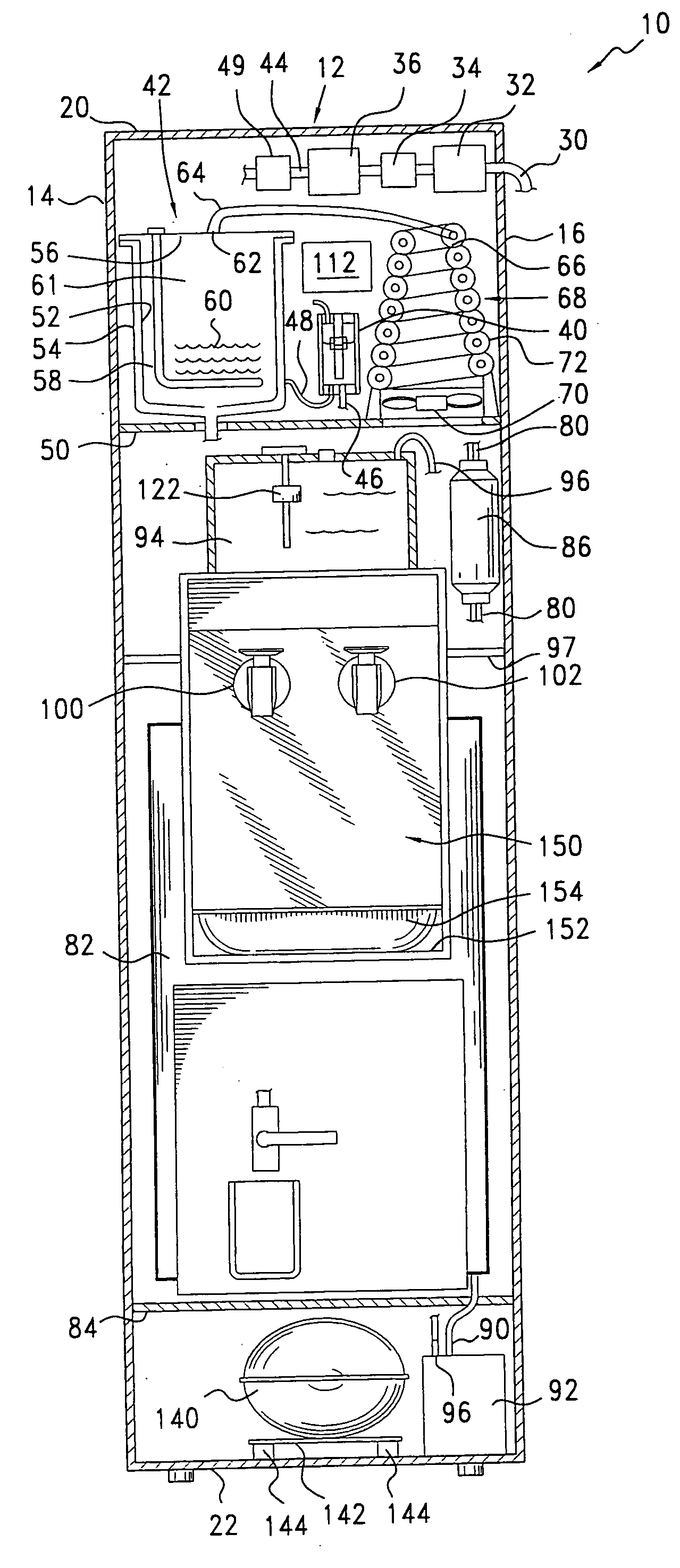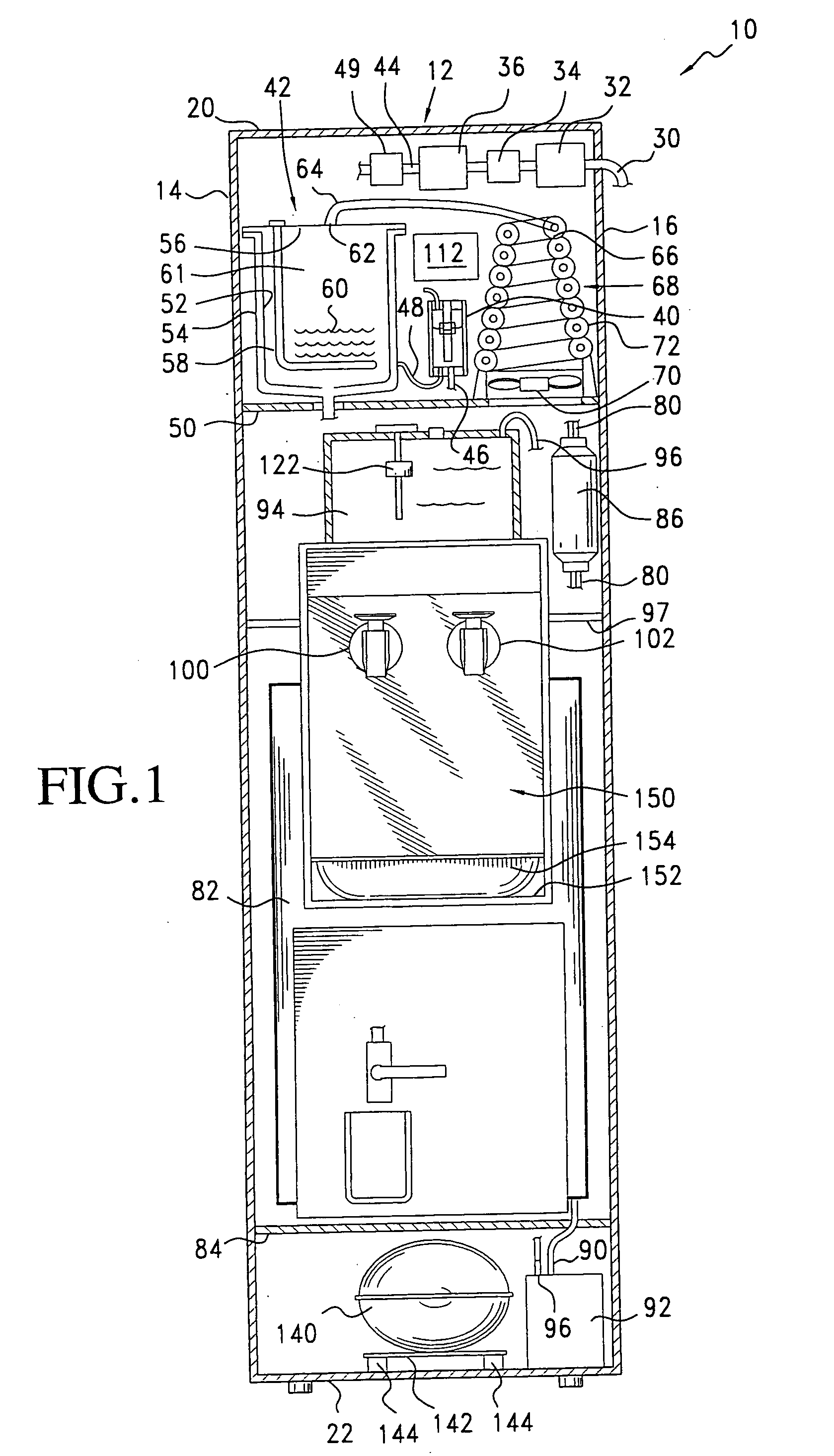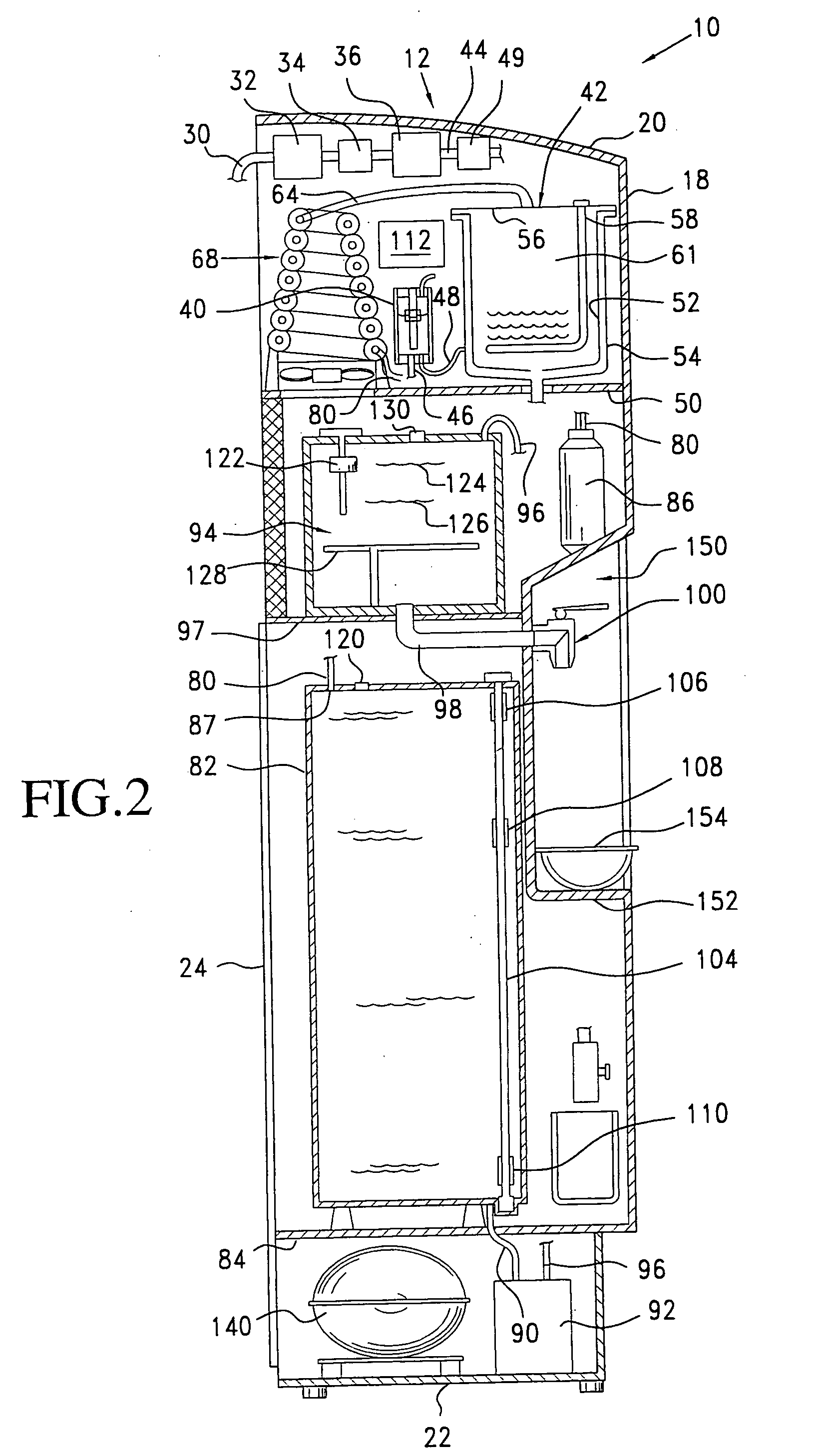Point of use water purification method & apparatus
a technology of water purification method and apparatus, which is applied in the direction of vacuum distillation separation, separation process, vessel construction, etc., can solve the problems of inability to completely eliminate, biofilm can be reduced, and problems still exist, and achieve the effect of quick and easy removal
- Summary
- Abstract
- Description
- Claims
- Application Information
AI Technical Summary
Benefits of technology
Problems solved by technology
Method used
Image
Examples
third embodiment
[0081] the noninvasive liquid level sensor controller detector of the present invention is illustrated at 380 in FIG. 11. This sensor is useful for noninvasively controlling, maintaining and detecting desired predetermined liquid levels in an associated vessel such as the boiler vessel 42, as discussed above, but in this case, the sensor 380 is used in association with a vessel or container which operates at pressures other than atmospheric. The illustrated device is similar to that illustrated in FIG. 9, and accordingly similar elements carry similar reference numerals. In this case, however, the vent tube 334 of the device of FIG. 9 is replaced by a pressure tube connector 382 which extends through the top cap 302 of sensor 380 and is in communication with the interior 308 of the body 300. The connector 382 is connected by way of pressure equalizer tube 384 to the uppermost portion 386 within vessel 42, above the upper level 320 of the liquid 60 within the vessel, by way of a conn...
fourth embodiment
[0082] the liquid level sensor of the present invention is illustrated in FIG. 12, to which reference is now made. In this embodiment, a level sensor and controller 400 is associated with a vessel or container 402, which may be the boiler vessel 42 of the present invention. This embodiment differs from that of FIGS. 9 and 11 in that it permits a rapid flow rate for the introduction of liquid into the vessel 402, and is also suitable for use when the supply liquid is to be introduced into the vessel above the liquid level within the container. In this embodiment, the sensor 400 is similar to that of the previous figures and includes a two-level reed switch assembly 404, similar to that illustrated at 312 in FIG. 9., and a connector line 406 which connects the bottom of the sensor 400 to the bottom of vessel 402, so that the sensor 400 and the vessel 402 are interconnected at locations below the desired minimum water level 408. The sensor is vertically aligned with vessel 402 so that ...
fifth embodiment
[0086] the noninvasive liquid level sensor and controller of the present invention is illustrated in FIG. 13, to which reference is now made. The sensor 450 of FIG. 13 differs from the embodiment illustrated in FIG. 9 only in that water from solenoid outlet line 44 does not travel through sensor 450 but rather to an inlet 452 of a ‘T’ connector 454, then to sensor 450 by way of ‘T’ outlet 456, and to vessel 54 through ‘T’ outlet 458 and line 460. This embodiment may be particularly suitable when the heat exchanger 49 (FIG. 4) is utilized to avoid a potential increase in the cost of materials needed to allow the sensor 450 to accommodate heated influent water from the heat exchanger.
[0087] The water treatment process of the present invention as described above is illustrated diagrammatically in FIG. 14, wherein raw water to be treated passes through pre-filter 32, solenoid valve 36, and through heat exchanger 49 to boiler 42 and to sensor 40. At the same time, vapor from boiler 42 pa...
PUM
| Property | Measurement | Unit |
|---|---|---|
| Pressure | aaaaa | aaaaa |
| Responsivity | aaaaa | aaaaa |
| Energy | aaaaa | aaaaa |
Abstract
Description
Claims
Application Information
 Login to View More
Login to View More - R&D
- Intellectual Property
- Life Sciences
- Materials
- Tech Scout
- Unparalleled Data Quality
- Higher Quality Content
- 60% Fewer Hallucinations
Browse by: Latest US Patents, China's latest patents, Technical Efficacy Thesaurus, Application Domain, Technology Topic, Popular Technical Reports.
© 2025 PatSnap. All rights reserved.Legal|Privacy policy|Modern Slavery Act Transparency Statement|Sitemap|About US| Contact US: help@patsnap.com



